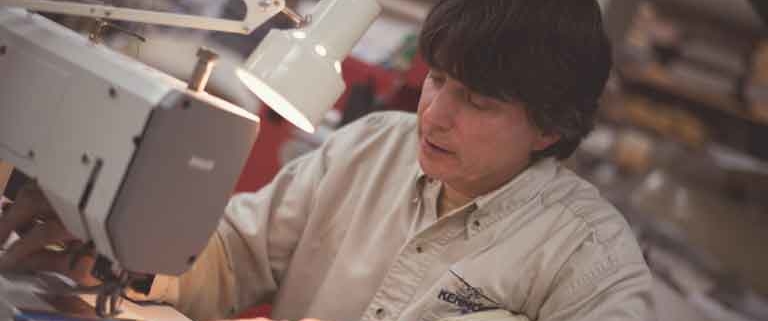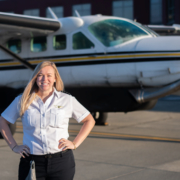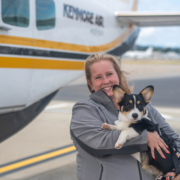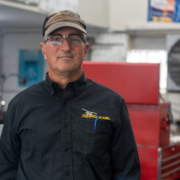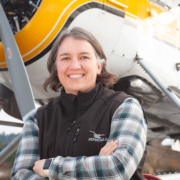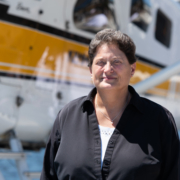Inside the Upholstery Shop with Clarence Kappes

Kenmore Air’s upholstery shop sits just above the mailroom. Its non-descript entrance rests at the top of a narrow stairway. Most people give the nearly windowless space nary a glance, let alone have a clue as to the artistry that goes on inside.
Beyond the threshold lies a veritable maze of platforms and sewing machines. The ceiling’s rafters resemble a chandelier of parts. They suspend seat frames in various states of repair. The scent of leather and wood shavings hangs heavy, like a cologne reminiscent of a time before Chinese imports were the status quo – a time when men crafted machines with the strength of their hands and the ingenuity of their wit.
At the center of it all, moving with a quiet sense of purpose, is upholstery specialist, Clarence Kappes.
He graciously let me join him while he was in the midst of a project. I watched as he measured a stretch of leather, measured it again, and then cut. “Custom craftsmanship is the only option,” Clarence explained. “We’re dealing with planes that haven’t been manufactured for years. There’s no factory making Beaver seats. If we want them, we have to search for existing parts and repair them before they can be upholstered.”
The last de Havilland Beaver was built in 1967. Only 1,657 planes were produced. For these planes to keep operating, the ability to completely restore them is key.
“We do everything here. When it comes to the seats, all I start with is a metal frame,” Clarence said. From cutting and shaping the aviation foam – a high density, flame retardant foam – to sewing the leather coverings, Clarence handcrafts each seat. Every step of the process requires him to pay close attention to detail, including his use of French seams.
“It’s a two step process that creates not only a really polished look, but a stronger overall surface,” Clarence told me as he flipped a portion of seatback covering and completed the second seam.
Originally from Minnesota, Clarence began his professional career as a carpenter. It wasn’t until 1998, when he was first commissioned to build cabinets for airplanes, that he began dabbling in aircraft upholstery. “Some of the aircraft cabinets had padding incorporated in areas next to seating,” Clarence said.
Padding on cabinets needed to match the padding on seats and before he knew it, Clarence was an upholstery expert. In need of his expertise, Kenmore Air recruited him in November of 2007. “I’ve been here ever since,” he said.
He upholsters an average of eight seats a month, which equates to roughly one fully outfitted Beaver. “When I’m doing the upholstery, I’m not just doing the seats. I have my hands on everything within the plane that’s covered in fabric. That includes doors, the storage compartment, and the air filtration system. Each aspect of the plane must be taken into account when we’re covering panels,” he said.
What projects does Clarence enjoy doing the most? Those where he gets to be creative.
“I really enjoy when a customer wants to do something different. Being creative like that is fun,” Clarence said.
And throughout the years, Clarence has definitely been creative. Using a variety of fabrics, colors, and stitching, Clarence creates designs that mirror customers’ personalities.
“I also spend a lot of time looking after [Kenmore Air’s] planes. We have 24 in the fleet and they get used a lot – especially the pilots’ seats. It’s essential those seats last as long as possible,” he said.
So next time you’re in a Kenmore Air plane, take a moment. Run your hand over the seat. You will probably be admiring Clarence’s craftsmanship.

